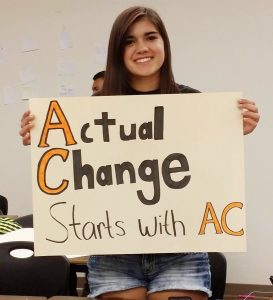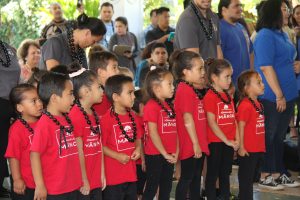Charting a course for school innovation, empowerment
Posted on Aug 25, 2022 in Capitol Connection, Featured, Main“Public education is the great enabler of dreams.” — Governor David Ige
This vision of what Hawai‘i’s public schools and the University of Hawai‘i system could be has been at the heart of Governor Ige’s mission to improve education. Back in 1987 as a first-term legislator, the governor worked with newly elected Gov. John Waihee to establish the first of two public Hawaiian immersion programs at Waiau Elementary. “People were saying to save the culture, we had to save the language,” said the governor. “From the brink of extinction with only 100 native speakers, now the language is spoken by thousands of people.” In 1993, then-Rep. David Ige worked with Sen. Mike McCartney to develop an omnibus education bill that became a landmark piece of legislation. It gave public schools more control over their own resources through the Student Weighted Formula to improve and innovate.

- $100 million from the 2016 legislature for air conditioning and heat abatement so students could learn better. The DOE succeeded in cooling 1,300 classrooms at 88 schools on five islands, with more improvements to come.
- Early College programs have expanded statewide with the governor’s support from the legislature. Students at more than 43 public high schools are earning college credits tuition-free and some have even graduated with associate degrees from UH community colleges before finishing high school.
Hawai‘i Promise, also advocated by the governor, provides funds for UH community colleges to cover the gap between what students can afford and college costs, after all federal and state financial aid and scholarships are applied.
- Hawai‘i’s Blueprint for Public Schools was developed by the governor’s team in 2016, based on wide community input, to encourage school empowerment and innovation. It helped guide the DOE’s strategic plan, moving away from a top-down, one-size-fits-all focus.
- The first-ever Hawai‘i Early Childhood State Plan in 2019 provided a collaborative roadmap to guide public and private efforts. The governor has called for a universal, statewide, public preschool system for every child in Hawai‘i.
- Governor’s Emergency Education Relief (GEER) innovation grants awarded to 31 schools, colleges and organizations across the state. The federal funds are being used to build on the Ige adminstration’s Blueprint for Public Education to set a course for educational change and reform following the pandemic. Other funds were directed to the Hawai‘i Online Portal for Education (a distance learning teacher academy) and “Next Steps to Your Future,” a free UH transition-to-college program.
- Major DOE and UH capital improvement projects under the Ige administration have included new or renovated performing arts and media centers, athletic and STEM facilities, improved classroom buildings and new schools for growing communities. In 2017, Governor Ige got personally involved in labor negotiations to win four-year contracts for teachers and school personnel. Afterward, he said he wanted to bring “labor peace” to the process so they could focus on improving our schools.

These Early College “Olympians” at Waipahu High School earned their college associate degrees before they graduated with their high school diplomas by taking dual credits. They’re pictured here with coordinator Mark Silliman (far left) and then-principal Keith Hayashi, now state Department of Education superintendent.



